Photokina, the largest dedicated biannual photo show in Europe, has opened its doors and shown off its various camera goodies this year.
However, it’s been a tumultuous time in the world of cameras, with the Kumamoto earthquakes in Japan having a devastating affect not only on its communities, but production lines. Which has meant a quieter show for some manufacturers than previous years.
Here are the best camera and the latest Sigma Lens announcement from Photokina 2016
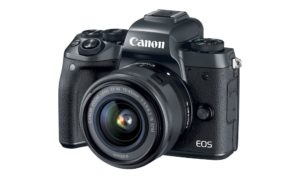 Canon EOS M5
Canon EOS M5
Canon had already made great announcement of the EOS M5 mirrorless camera to the 5D Mark IV earlier this year. Canon joins the club of mirrorless manufacturers offering hybrid (optical plus sensor shift) stabilization, with 5-axis compensation. It has a far more dSLR-like appearance. This is the first Canon mirrorless to incorporate a built-in electronic viewfinder and a real grip. The touchscreen display tilts down for selfies.Canon plans to ship the body and a kit with the EF-M 15-45mm f3.5-6.3 IS STM lens in November for $980 and $1,100, respectively. That new EF-M 18-150mm lens is a compact substitute for the older 18-135mm IS STM, with a longer maximum focal length of 240mm-equivalent, intended as a general-purpose option for the single-lens customer.
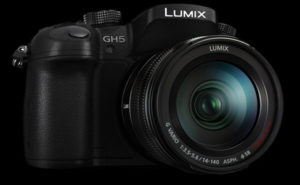 Panasonic Lumix GH5
Panasonic Lumix GH5
The top dog of the G-series gets its much rumoured update. The GH5 goes one better than the GH4 by including “6K Photo” which can extract a still image from the file. There’s also 4K video capture at up to 60fps.
Other than the video focus the camera remains a similar top-end mirrorless model: delivering super-fast autofocus in a body that houses heaps of customisable buttons and controls, along with built-in viewfinder and vari-angle rear touchscreen.
The camera will be out in early 2017, but there’s no official price just yet
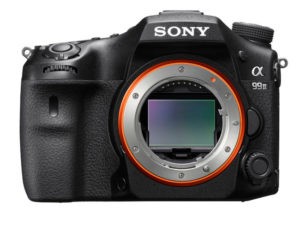 Sony A99 Mark II
Sony A99 Mark II
After more than three years on the market, the Alpha 99 gets its replacement, the aptly named A99 Mark II.
This full-frame SLT (that’s single lens translucent, if you’re wondering) brings together a 42.2-megapixel full-frame sensor, with a new hybrid face detection autofocus – which combines 399 phase detection points on the sensor, paired with 79 phase detection points on a separate sensor that work continuously together.
Add 5-axis image stabilisation, 12fps continuous shooting, 4K video capture with no pixel binning, and Sony has got one mighty fine stills or video capture device on its hands. It’s not cheap though: the A99 II will cost $4,000 body-only when it launches in November.
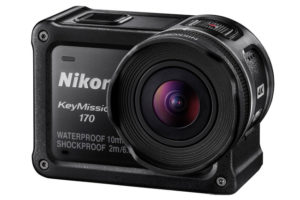 Nikon KeyMission Action Cameras
Nikon KeyMission Action Cameras
Nikon has gone full action camera: with its already-announced KeyMission 360 ($550) being joined by the KeyMission 170 ($430) and KeyMission 80 (£325). That’s the option to choose 360-degree all-around VR capture, an ultra-wide angle 170-degree angle of view, or a less wide 80-degree angle of view. That’s three different products rather than three different options within the one camera, though. Which seems like an odd choice, given the plethora of action cameras already on the market. The clip-on wearable KeyMission cameras are all tough and waterproof, with easy-to-use touchscreen and SnapBridge sharing built-in.
There was no mention of anticipated 2017 kit either. However like Canon, Nikon had earlier announced their top-end full frame D5 and crop sensor D500, along with the recently announced entry level D3400.
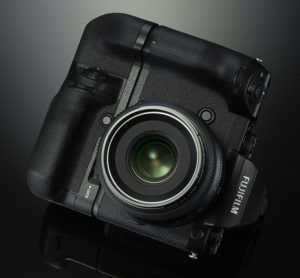 Fujifilm GFX 50S
Fujifilm GFX 50S
Fujifilm announced a brand new mirrorless medium format camera, complete with brand new GF mount lens system. With a whopping 51.4-megapixels across the sensor’s 43.8 x 32.9mm surface (that’s 1.7x larger than a full-frame DSLR), one of Fujifilm’s goals is to offer high-resolution capture in any number of ratios, from 1:1 through to 3:4 and even 16:9.
In addition to a vari-angle LCD screen for waist-level work, including vertical tilt like on the X-T2, the GFX 50S comes complete with a viewfinder included in the box. But it’s not just any old viewfinder: it can rotate through vertical and horizontal angles – ideal if a still life is setup at an obscure angle, for example.
Available from early 2017, the Fujifilm GFX doesn’t have an official price just yet, but the guess is with a 63mm lens this would be around $9,900
At launch there will be three lenses – 63mm f/2.8, 32-64mm f/4.0 and 120mm f/4.0 – with an additional three set to join the line-up in the year following availability.
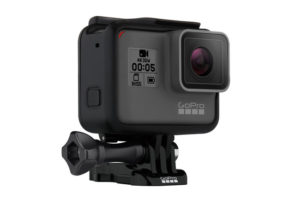 GoPro Hero Black and Hero 5 Session
GoPro Hero Black and Hero 5 Session
The new GoPro Hero 5 brings some key changes to the ubiquitous action camera, bringing a display to the rear and waterproofing down to 10m without the need for an additional case. Stereo audio is offered, 4k/30fps footage is captured and there’s built-in GPS and voice control. It can also automatically upload content to the cloud while charging. The new GoPro Hero 5 is compatible with all the existing GoPro mounts.
Taking a step down is the Hero 5 Session. This is GoPro’s cube camera, updated with voice control and now offering 4k/30fps capture like the bigger device.
The GoPro Hero 5 costs $455 and the Session is $325.
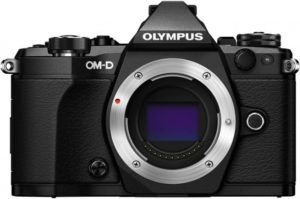 Olympus OM-D E-M1 Mark II
Olympus OM-D E-M1 Mark II
With a new 121-point autofocus system, the OM-D E-M1 Mark II is all about speed. Its 20.4-megapixel sensor can capture images at up to a whopping 18 frames per second (fps), while its the first Olympus mirrorless camera to add 4K video capture too.
The E-M1 II is splshproof, dustproof and freezeproof, comes with 5-axis image stabilisation, dual SD card slots. Talk about spec-tastic; this looks like Olympus’s best camera to date, which is perfectly timed to take on the likes of the Fujifilm X-T2.
Sigma Lenses
Sigma Corporation unveiled its new 85mm F1.4 DG HSM Art, 12-24mm F4 DG HSM Art and 500mm F4 DG OS HSM Sport Global Vision lenses
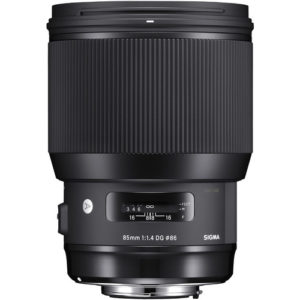 Sigma 85mm F1.4 DG HSM Art – The Ultimate Portrait Lens
Sigma 85mm F1.4 DG HSM Art – The Ultimate Portrait Lens
The new Sigma 85mm F1.4 Art lens is engineered to support the highest resolution sensors on the market with an exceptional degree of sharpness.
Made up of 14 elements in 12 groups, the lens features not one, but two SLD (special low dispersion) glass elements and one “glass element with a high rate of anomalous partial dispersion and refraction,” to quote Sigma. All of this together to produce what Sigma calls “attractive bokeh” for the discerning portrait photographer.
They also re-engineered the AF system in this lens, giving it 1.3x the tourque of previous generations, and introduced full-time manual focus override so you can always get a response when you twist the focus ring even in continuous AF.
The Sigma 85mm F1.4 DG HSM Art lens supports Canon, Nikon and Sigma mounts. The Nikon mounts feature a brand new electromagnetic diaphragm.
The Sigma 85mm F1.4 Art lens will be available in late October and retails for a recommended street price of $1199.
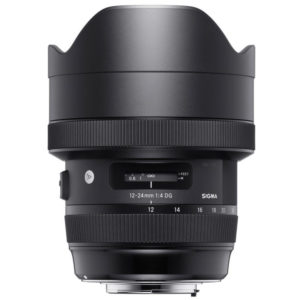 Sigma 12-24mm f/4 DG HSM Art Lens
Sigma 12-24mm f/4 DG HSM Art Lens
The new 12-24mm f/4 Art lens is an ultra-wide angle zoom designed, like the rest of the art series, to play with the highest resolution cameras you can throw at it.
Featuring the largest aspherical glass mold in the industry, Sigma claims this ultra-wide offers photographers “virtually no distortion, flare, or ghosting”. It also features lens elements made with FLD (F Low Dispersion) glass, which Sigma says is “equivalent to calcium fluorite in performance” resulting in amazing image quality from the center all the way out to the edges of your image.
Like the 85mm before it, the Sigma 12-24mm F4 DG HSM Art lens will come in Canon, Nikon, and Sigma lens mounts, and will be available late October at a retail price of $1,600.
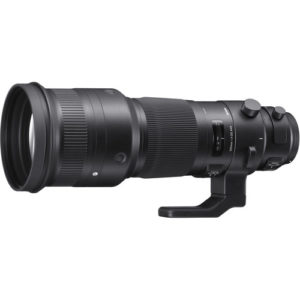 Sigma 500mm f/4 DG OS HSM Sports Lens
Sigma 500mm f/4 DG OS HSM Sports Lens
Sigma has released a new flagship telephoto lens the 500mm f/4 DG OS HSM. It’s the first prime telephoto DSLR lens in Sigma’s Sports line, and it plans to set the bar pretty high.
“Designed for the professional sports and wildlife shooter, the ultra-durable lens features magnesium alloy components, a carbon fiber hood, a water and oil resistant front element, and is dust and splash proof,” writes Sigma. “The lens incorporates two FLD and one SLD glass elements, while the optimized power distribution helps minimize spherical aberration and axial chromatic aberration.”
The lens also features an “advanced Optical Stabilizer (OS)” that lets you switch between two modes: #1 for shooting handheld, and #2 for panning and tracking (vertically and horizontally).
The Sigma 500mm f/4 is a beast of a lens that comes with a price tag to match. The lens, which will be available in Canon, Nikon, and Sigma mounts, will be available in late October (November for Nikon) at a price of $6,000.


